Excerpts from Jim Conrad's
Naturalist Newsletter
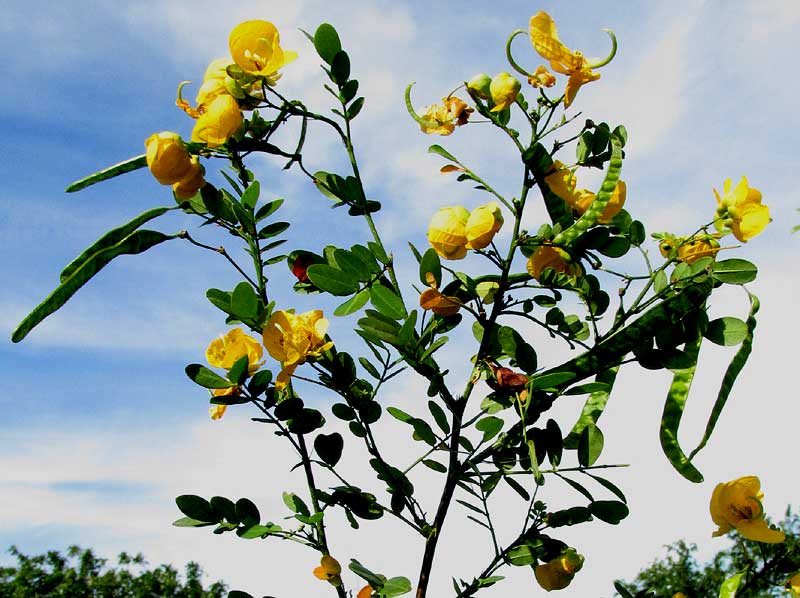
from the December 7, 2014 Newsletter issued from Río Lagartos, on the Yucatan Peninsula's northern coast (~N21.60°, ~W88.16°), Yucatán state, MÉXICO
TWIN-FLOWERED CASSIA
Nowadays along roadsides here there's a dense, much branched, ten-ft-tall cassia (3m) that very prettily is loaded with 1½-inch broad flowers (4cm) and slender, flat, stiff legumes. Since so many similar-looking cassia species exist -- nine are listed for the Yucatan -- for identification purposes it's important to pay attention to details.
First, above you can see a single flowering and fruiting branch of this week's cassia. A field mark worth noting in that photo is that most flowers occur in pairs atop short, slender stems, or peduncles. Sometimes there are more or less than two, but the predominant twin-flowered condition turns out to be important when separating this species from all the rest. Another good field mark is seen in the twinned flowers shown close-up below:
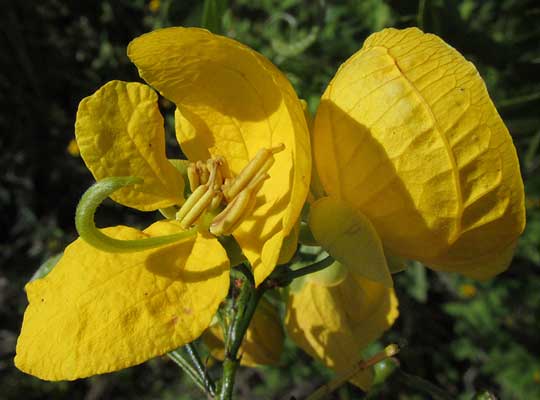
There notice that the larger anthers (like two stuck-together bananas) are topped by slender, fingerlike appendages. A closer look at those big, curved anthers with their appendages is shown below:
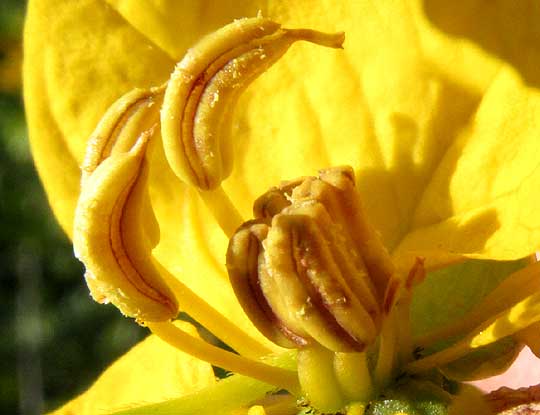
A view of a flower from behind showing the species' sepals, which are distinctively different from one another in size and shape, is shown below:
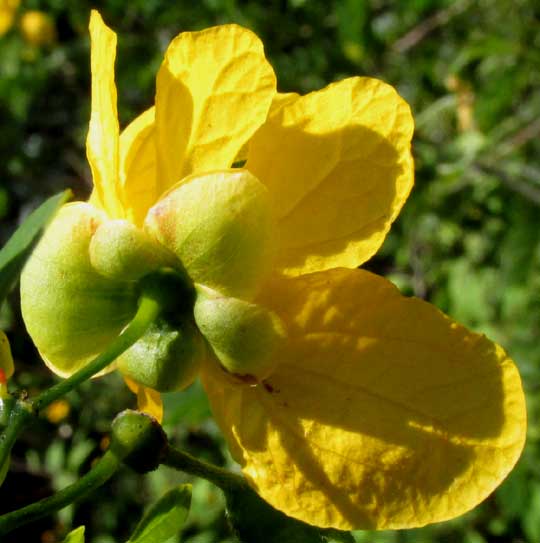
A shot of a section of hairy, flat legume is shown below:
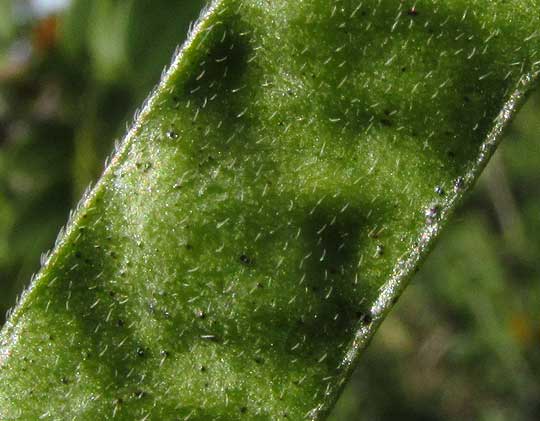
The bush's leaves are classic pinnately compound ones, which alternate on the stem, and whose leaflets arise opposite one another on the leaf midrib, or rachis, as shown below:

On the rachis of each compound leaf, between the bottom-most leaflets (those next to the woody stem), there's a conspicuous, conical gland, possibly producing a substance that attracts ants who might attack a herbivore starting to eat the leaves, as shown below:
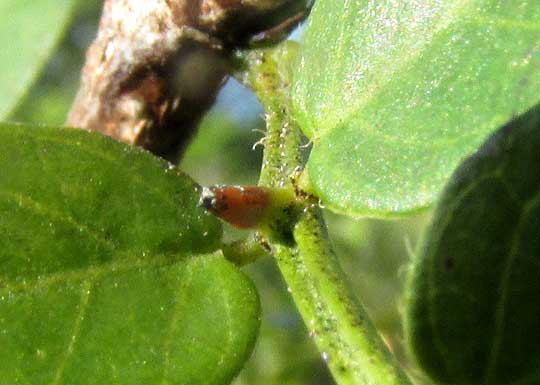
Though this pretty cassia species doesn't occur in English speaking lands (except Belize) it has an English name because sometimes it's planted in gardens. It's the Twin-flowered Cassia, SENNA PALLIDA, of which about twenty varieties are recognized.
In the 2003 book Nomenclatura, Forma de Vida, Uso, Manejo Y Distribución de Las Especies Vegetales de la Peninsula de Yucatan. Etnaflora Yucatanense Fasiculo 20 by Alberto Arellano and others, it's reported that the Twin-flowered Cassia is a good pollen producer for foraging bees, and that the leaves when crushed and boiled in water produce a water good for washing stinky feet.
from the March 6, 2016 Newsletter issued from Hacienda Chichen Resort beside Chichén Itzá Ruins, central Yucatán MÉXICO
GAUMER'S TWIN-FLOWERED CASSIA
This week a scrubby, knee-high, dust-covered plant is flowering and though its vegetative parts are very different from the regular Twin-flowered Cassis, it's considered a variety of that species. It's shown below:

This week's small, bush variety produces much smaller, hairier leaves than the previous type, though the flowers remain identical, and of the same size. Below, you can see the reduced leaves next to the big flowers:

Though our shrub variety's flowers looked identical to those of the tree type, I photographed the shrub's flowers just for the record. The typical lopsided flower is shown head-on below:
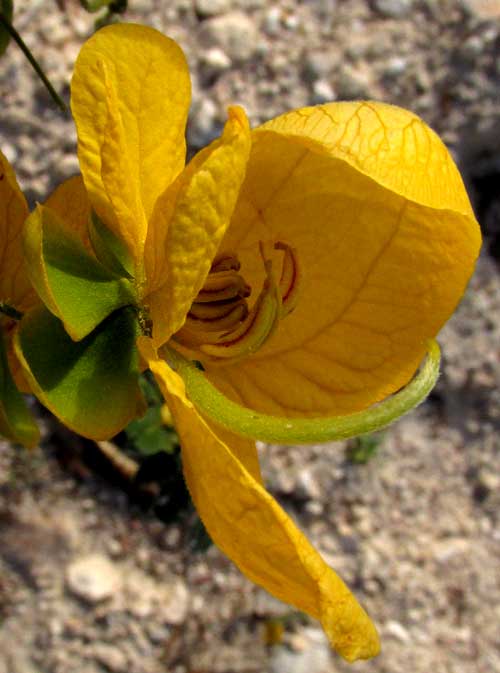
The blossoms' large, very unequal, rounded sepals are shown below:
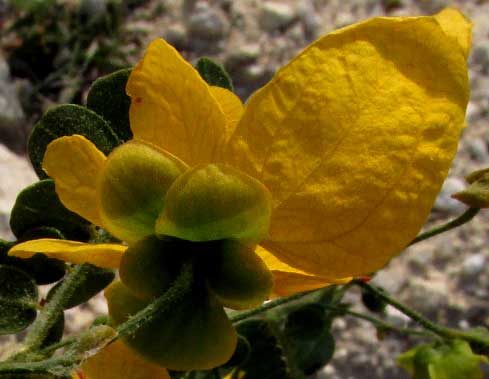
An unusual feature of the species is that between the compound leaves' bottom-most leaflets there's a conspicuous, conical gland Our knee-high scrub's midget leaves have the same gland, shown below:
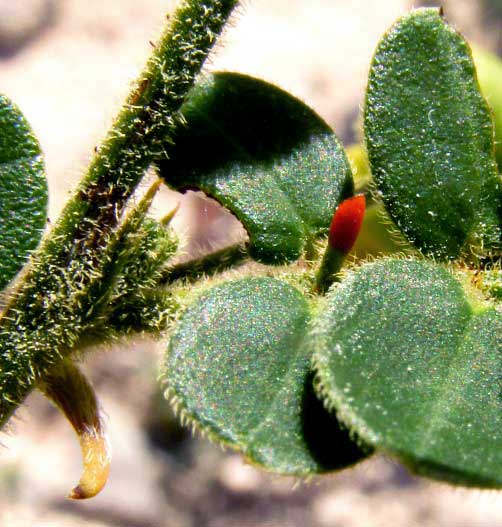
Our small, hairy plant of this week is known as SENNA PALLIDA var. GAUMERI.
In the past, this small, hairy taxon was bounced around by various authors who couldn't quite decide what to do with it. It was first named Peiranisia gaumeri. Later it was known by several names, such as Cassia yucatensis and Senna galegifolia. However, seeing that the flowers and that strange gland on the leaves are exactly alike, I tend to agree that it's just a variety of Senna pallida -- one we can call Gaumer's Twin-flowered Cassia.